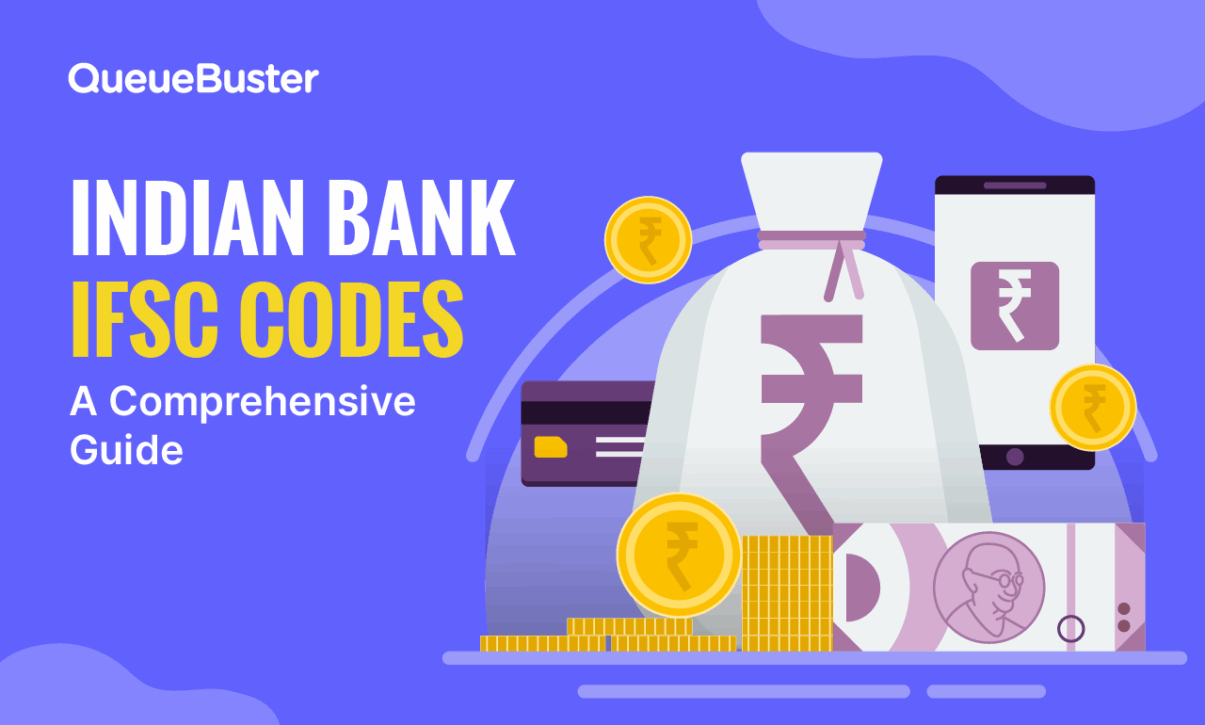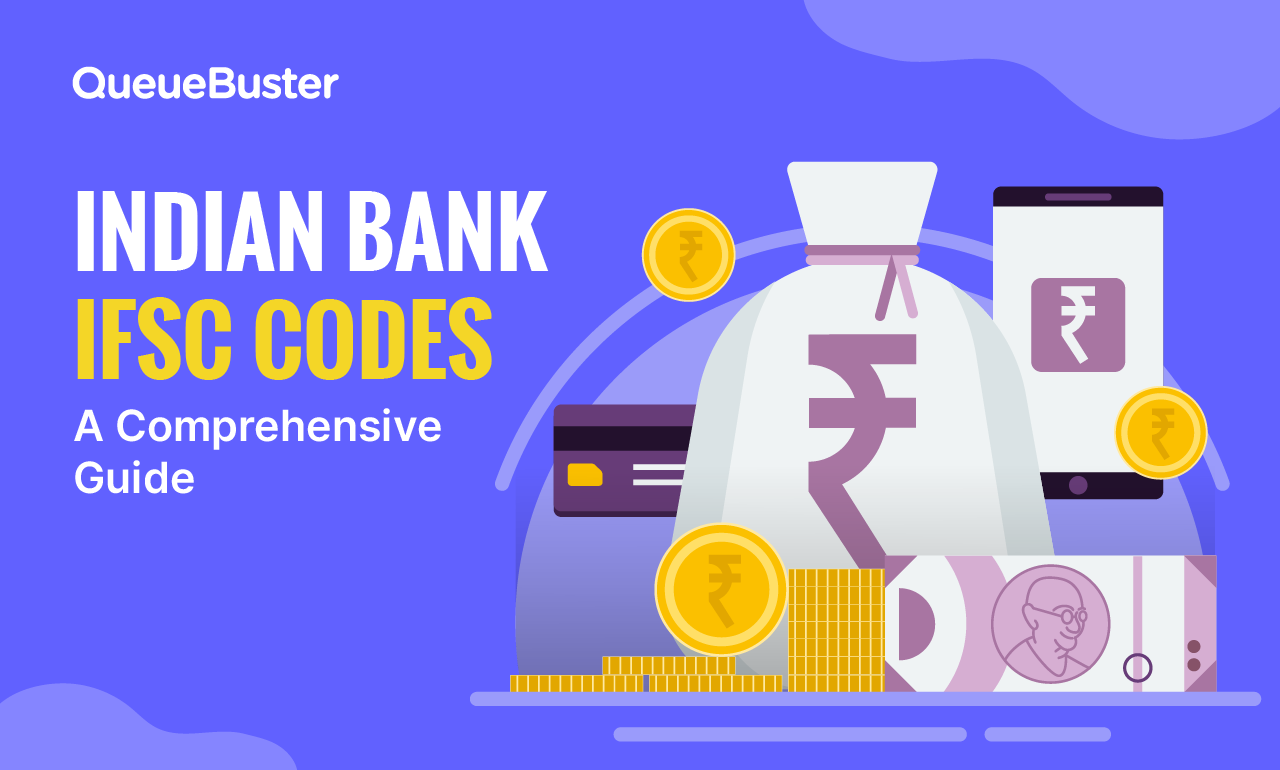
Indian Bank IFSC Code: The Why’s And How’s Of IFSC In India
Indian Bank IFSC Code: The Why’s And How’s Of IFSC In India

By Charu Gupta Published: April 18th, 2025
IFSC Code? You must have heard this term somewhere or the other, if you live in India specifically. But do you know how to use it exactly and what is its importance? If yes, that is great. If no, then you are at the right place. This blog will give you a deep insight into the Indian bank IFSC code and their entire usage.
The Indian financial system code (IFSC Code) is an 11-character alphanumeric code used by banks across India to facilitate payments through systems like NEFT and RTGS. If you hold a bank account in India, providing the correct Indian bank IFSC code is essential for processing electronic transactions. Accurate IFSC information ensures your funds are transferred swiftly and securely to the intended bank account. Modern POS billing software have also evolved to include basic banking and payment functionalities. Here, we’ll guide you through everything you need to know about their importance in India’s banking system.
What Is An IFSC Code?
Every bank branch in India is assigned a unique identifier called the Indian Financial System Code (IFSC). This 11-character alphanumeric code is printed on cheque books and other bank documents. Think of it like a postal PIN code—but for bank branches. It ensures that funds are routed accurately during electronic transactions.
IFSC codes play a crucial role in systems like NEFT (National Electronic Funds Transfer), RTGS (Real Time Gross Settlement), and CFMS (Centralised Funds Management System). Without the correct Indian Bank IFSC code, transferring money from one account to another isn’t possible.
The structure of the Indian Bank IFSC code is simple:
- The first 4 characters denote the bank (e.g., ‘SBIN’ for State Bank of India).
- The 5th character is always ‘0’ (reserved for future use).
- The last 6 characters identify the specific branch.
Example:
For SBI’s branch located at 23, Himalaya House, Kasturba Gandhi Marg, New Delhi 110001, the IFSC code is SBIN0005943.
Here, ‘SBIN’ stands for the bank, and ‘005943’ refers to the branch.
When making a fund transfer, you’ll need the recipient’s account number and their branch’s IFSC code to ensure the money reaches the right place.
How To Find Indian Bank IFSC Code?
There are various different ways to locate your IFSC code. You can visit the Indian bank’s official website and use their branch locator tool to find the IFSC code. You can also check your passbook or the top of your cheque leaf, where the IFSC code is usually printed. A few banking apps such as BHIM UPI, Gpay also display IFSC codes when adding beneficiaries.
Top Popular banks IFSC Codes
| Bank Name | Branch Name | IFSC Code | Location |
| State Bank of India | Connaught Place | SBIN0000691 | New Delhi |
| HDFC Bank | Fort Branch | HDFC0000060 | Mumbai, Maharashtra |
| ICICI Bank | South Extension | ICIC0000086 | New Delhi |
| Axis Bank | MG Road | UTIB0000009 | Bengaluru, Karnataka |
| Punjab National Bank | Parliament Street | PUNB0015400 | New Delhi |
| Bank of Baroda | Mandvi Branch | BARB0MANDVI | Mumbai, Maharashtra |
| Kotak Mahindra Bank | Nariman Point | KKBK0000958 | Mumbai, Maharashtra |
| Canara Bank | Jayanagar 4th Block | CNRB0000131 | Bengaluru, Karnataka |
| Union Bank of India | Mumbai Main Branch | UBIN0530786 | Mumbai, Maharashtra |
| Indian Bank | T Nagar | IDIB000T056 | Chennai, Tamil Nadu |
Why Is The Indian Bank IFSC Code Important?
IFSC codes are vital for:
- Accurate Fund Transfers: Ensuring money reaches the correct bank branch.
- Electronic Payment Systems: Facilitating NEFT, RTGS, and IMPS transactions.
- Error Reduction: Minimizing the chances of misrouted or failed transactions.
- Regulatory Compliance: Allowing RBI to monitor and track digital transactions.
Interesting Facts about IFSC Codes
- RBI’s Authority: The Reserve Bank of India is solely responsible for issuing and managing IFSC codes.
- Uniqueness: Each bank branch has a distinct IFSC code, eliminating transaction errors.
- Error Handling: Incorrect IFSC codes can lead to failed transactions, with funds typically returned to the sender.
What Is MICR Code?
The Magnetic Ink Character Recognition (MICR) code is a 9-digit number found on cheques and passbooks, aiding in the processing of cheques.
Structure of MICR Code:
- First 3 digits: City code, aligning with the postal PIN code.
- Next 3 digits: Bank code.
- Last 3 digits: Branch code.
Differences Between MICR And IFSC Codes
The Indian Financial System Code (IFSC) and Magnetic Ink Character Recognition (MICR) code serve different purposes in the banking ecosystem.
The Indian Bank IFSC code is an 11-character alphanumeric code used to uniquely identify a bank branch for the purpose of electronic fund transfers. It is essential for carrying out online transactions and is assigned by the Reserve Bank of India (RBI). The format consists of the first four characters representing the bank, the fifth character as zero (reserved for future use), and the last six characters identifying the specific branch.
On the other hand, the MICR code is a 9-digit numeric code printed in magnetic ink on cheques. It is used primarily for the clearing and processing of physical cheques through MICR technology, enabling faster and more secure cheque handling. The MICR code is also issued by the RBI and includes details about the city, bank, and branch where the account is held.
In short, while IFSC is used for online transactions, MICR is used for offline cheque processing. Both codes help in uniquely identifying bank branches but are applied in different transaction systems.
FAQ’s
- What happens if I enter the wrong Indian Bank IFSC code?
The transaction may fail, and funds are usually returned to the sender’s account.
- Do I need an IFSC code for international transfers?
No. For international transactions, a SWIFT code is required.
- Is it possible to change the IFSC code of a bank branch?
Yes, after bank mergers or branch relocations, IFSC codes may change. Always confirm the updated code from the bank or RBI website.
- How does RBI regulate Indian bank IFSC code?
The RBI maintains and updates the IFSC directory. It ensures that all banks follow a standardized format and assigns codes when new branches open or old ones merge.
- Are IFSC codes the same for savings and current accounts?
If both account types are held in the same branch, their IFSC code will be the same. IFSC is branch-specific, not account-type specific.
- Is this information important for payroll integration in POS systems?
Yes, IFSC codes are essential behind the scenes in a POS system for handling payments to vendors, staff, and even customers, making sure every digital transaction is processed safely.
You can also refer to these blogs:
Popular Posts

Why Table Ordering and QR-Based Menus Are Booming in UAE Restaurants
The UAE restaurant industry is evolving faster than ever. From luxury fine […]

5 Effective Tips To Manage Billing For Multiple Customers
Managing billing for multiple customers, especially during peak business hours, can be […]